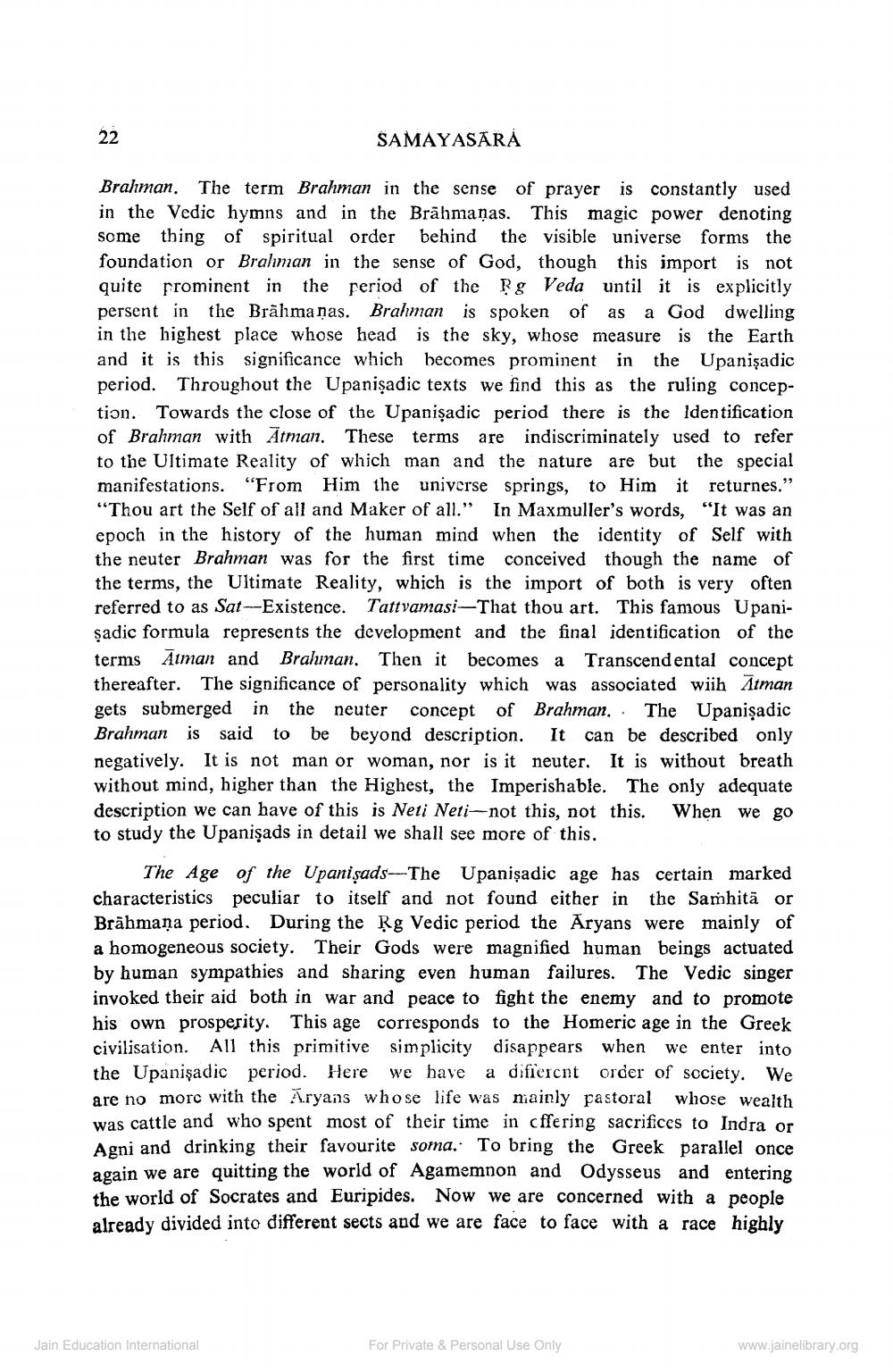________________
22
SAMAYASARA
Brahman. The term Brahman in the sense of prayer is constantly used in the Vedic hymns and in the Brahmanas. This magic power denoting some thing of spiritual order behind the visible universe forms the foundation or Brahman in the sense of God, though this import is not quite prominent in the period of the g Veda until it is explicitly persent in the Brahmanas. Brahman is spoken of as a God dwelling in the highest place whose head is the sky, whose measure is the Earth and it is this significance which becomes prominent in the Upanisadic period. Throughout the Upanisadic texts we find this as the ruling conception. Towards the close of the Upanisadic period there is the Identification of Brahman with Atman. These terms are indiscriminately used to refer to the Ultimate Reality of which man and the nature are but the special manifestations. "From Him the universe springs, to Him it returnes." "Thou art the Self of all and Maker of all." In Maxmuller's words, "It was an epoch in the history of the human mind when the identity of Self with the neuter Brahman was for the first time conceived though the name of the terms, the Ultimate Reality, which is the import of both is very often referred to as Sat-Existence. Tattvamasi-That thou art. This famous Upanişadic formula represents the development and the final identification of the terms Atman and Brahman. Then it becomes a Transcendental concept thereafter. The significance of personality which was associated with Atman gets submerged in the neuter concept of Brahman. The Upanisadic Brahman is said to be beyond description. It can be described only negatively. It is not man or woman, nor is it neuter. It is without breath without mind, higher than the Highest, the Imperishable. The only adequate description we can have of this is Neti Neti-not this, not this. When we go to study the Upanisads in detail we shall see more of this.
The Age of the Upanisads-The Upanisadic age has certain marked characteristics peculiar to itself and not found either in the Samhita or Brāhmaṇa period. During the Rg Vedic period the Aryans were mainly of a homogeneous society. Their Gods were magnified human beings actuated by human sympathies and sharing even human failures. The Vedic singer invoked their aid both in war and peace to fight the enemy and to promote his own prosperity. This age corresponds to the Homeric age in the Greek civilisation. All this primitive simplicity disappears when we enter into the Upanisadic period. Here we have a different order of society. We are no more with the Aryans whose life was mainly pastoral whose wealth was cattle and who spent most of their time in cffering sacrifices to Indra or Agni and drinking their favourite soma. To bring the Greek parallel once again we are quitting the world of Agamemnon and Odysseus and entering the world of Socrates and Euripides. Now we are concerned with a people already divided into different sects and we are face to face with a race highly
Jain Education International
For Private & Personal Use Only
www.jainelibrary.org




